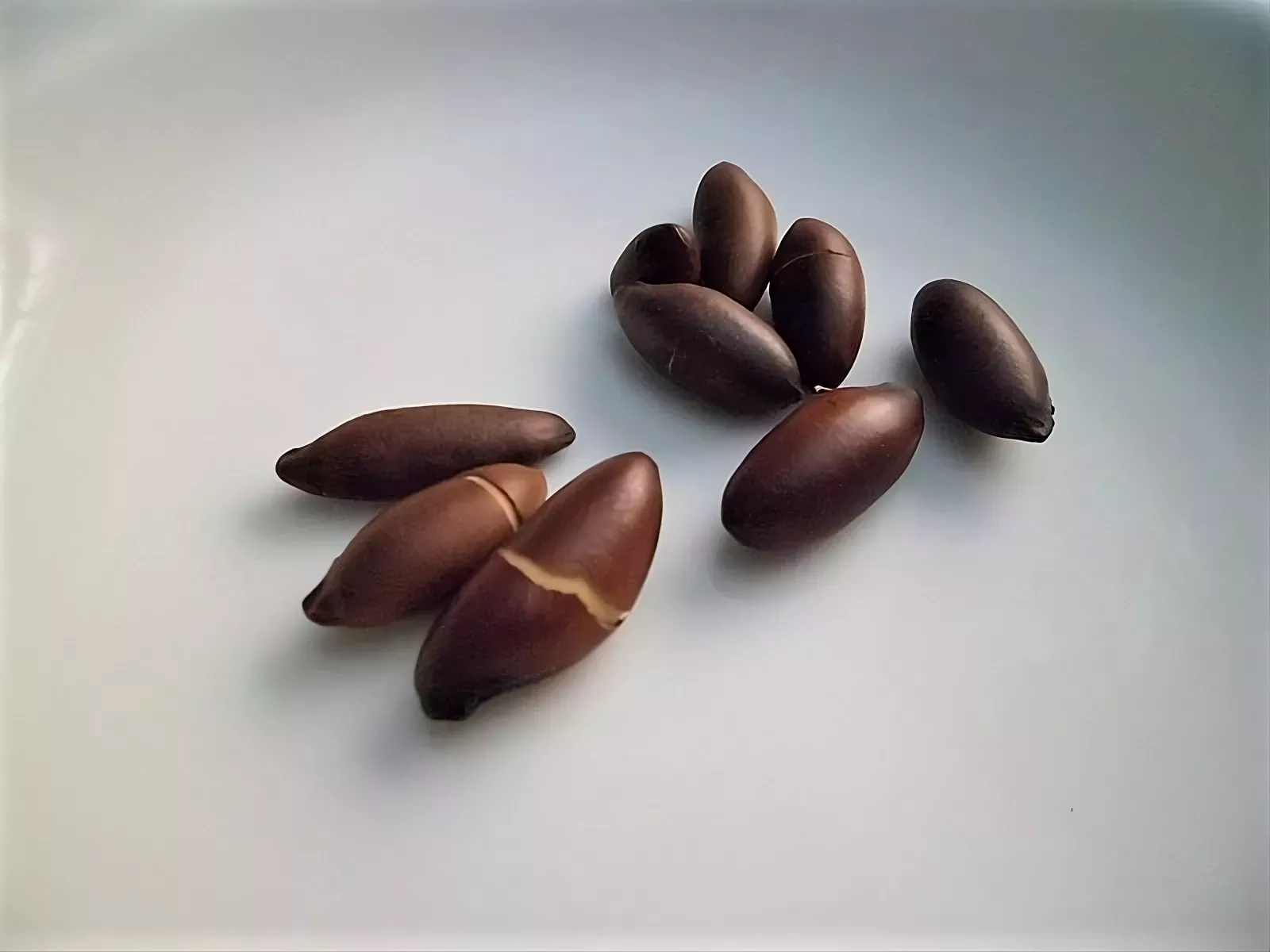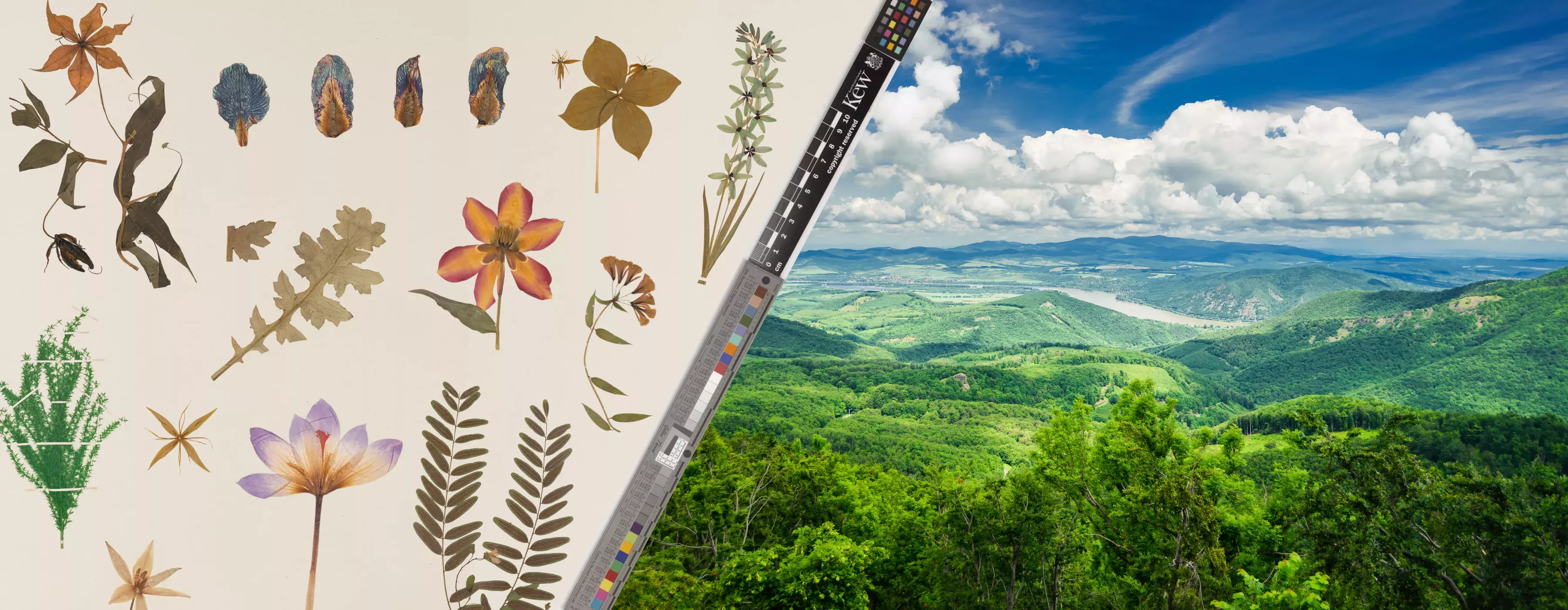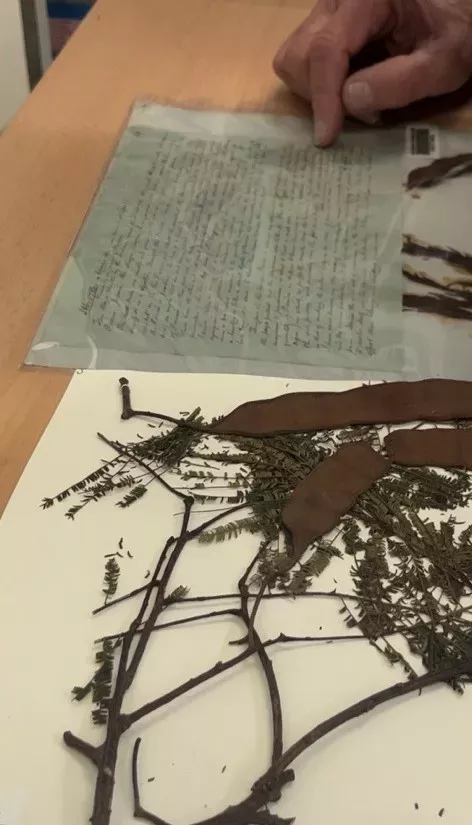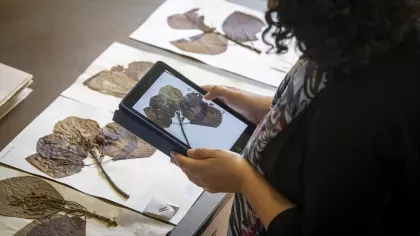13 September 2023
6 unexpected ways scientists see dried plants helping people and the planet
Seen by many as historic relics with little application, herbarium specimens are vital in research. See through the lens of a scientist who uses them to combat our greatest global challenges.
 (1).png.webp?itok=cu_EcePy)
What do you see when you look at the herbarium specimens pictured below?


Just a brown, dried plant of little use? Though it may seem like that at first glance, these specimens can in fact hold a world of secrets and possibilities to help scientists save our planet.
Herbarium specimens, perhaps sometimes perceived as boring relics of the past, actually play a crucial role in cutting-edge research, impacting our world in ways we might never have imagined.
From helping communities thrive to unlocking potential new medicines and combating climate change, herbarium specimens hold the key to understanding and preserving our planet's biodiversity.
In light of making our entire collection available online as part of a multi-million pound Digitisation Project, here we delve into specific examples and highlight ‘what a scientist may see’ when looking at a dried plant from a herbarium collection.
1. A way to help communities thrive
One fascinating application of herbarium specimens lies in their role in understanding and sustaining communities. Take the case of Dipteryx alata: a large, undomesticated, edible nut-bearing tree that belongs to the legume family and grows in dry tropical lowlands in central South America.
This tree produces a nut which has gained popularity in North America as a superfood snack. Off the back of this popularity, local communities in this tree’s native region collect and sell the nut for a source of income, allowing them to buy medicines for the old and educational materials for the young.

However, with the emergence of this nut’s mass harvesting, the fate of Dipteryx alata has looked bleak with over-collecting threatening to eradicate this species from its native region.
To ensure the sustainable collection of these nuts, scientists turn to herbarium specimens for crucial data.
Researchers like Bente Klitgaard begin by locating target specimens in herbaria like ours here at Kew. These specimens are then used to map the distribution of, for example, Dipteryx alata in its native country of Bolivia.
By studying the specimens and analysing their size, scientists can calculate the carrying capacity of the trees, allowing them to determine how many nuts the local community can collect without threatening the tree's survival.
This ultimately helps strike a delicate balance between economic prosperity for the community and conservation of the species.
What a scientist would see...
So, when looking at a herbarium specimen like Dipteryx alata, a scientist may see the potential to help a community thrive economically, allowing them to continue buying medicines, educational materials and – as we will see – equipment to fight fires.
.png.webp?itok=ix30H77J)
2. The source of new pharmaceutical drugs
Beyond supporting communities, herbarium specimens also offer a glimpse into potential medicinal breakthroughs. Historical notes captured alongside collected specimens that have ended up in our Herbarium have been invaluable in revealing traditional uses of plants for medicinal purposes.
For instance, one note detailed how a tribe in Ecuador boiled the leaves, bark and flowers from the red-flowered Brownea grandiceps tree to make a contraceptive (one of the earliest known contraceptives in human history).
Based on this, a pharmaceutical company screened the plant’s molecules to find that it did in fact contain a flavonoid that, once digested, was converted into estrogen – ultimately having a contraceptive effect.
Now, for the first time in Kew's history, you can help us unlock similar secrets from nature by donating to our ambitious Digitisation Project. This will help make all 8 million herbarium and fungarium specimens accessible to everyone around the world, accelerating research into pressing global issues.
What a scientist would see...
In the case of Brownea grandiceps, besides its ornamental beauty, a scientist may see new treatments or pharmaceutical drugs based on traditional knowledge that may have fewer side effects than current medicines.
.png.webp?itok=Eqc5smbK)
 (1).jpg.webp?itok=bqDTVRVj)
3. A tool to help us tackle climate change
As climate change continues to pose a significant global challenge, herbarium specimens prove to be instrumental in our understanding of how climates were in certain regions in the past and how trends may change in the future.
One possible example could be where herbarium specimens collected 50 to 200 years ago show morphological changes due to a change in climate such as, for example, reduced rainfall or higher temperatures.
Based on this, researchers could calculate how the climate could continue to change in the following years, allowing them to put contingency measures in place.
For example, a climate that is becoming drier increases the risk of forest fires, threatening wildlife and habitats. By using data from herbarium specimens, scientists can raise awareness that may drive funding to local communities so they can buy equipment to safeguard their environments from wildfires.
What a scientist would see...
In this case, when looking at historic, wild herbarium specimens a scientist may see a window into the past environmental conditions and the opportunity to protect forests, habitats and livelihoods with mitigating contingency plans.

You can now immortalise a piece of botanic history. Donate to digitise a plant today and help us unlock nature's secrets.
4. A way to save crops
On a similar note, herbarium specimens also hold the key to enhancing agricultural productivity and ensuring global food security. As climate change disrupts traditional agricultural practices, it becomes essential to identify crop varieties that can withstand extreme weather conditions, pests, and diseases.
Through the study of herbarium specimens, scientists can locate wild relatives of cultivated crops that exhibit traits of interest, such as drought, salt, or disease resistance.
Vital traits from these wild relatives can then be bred with existing crops to transfer these beneficial traits, creating more resilient and sustainable agricultural systems.
What a scientist would see...
With this in mind, if a scientist was looking at a crop’s wild ancestor, they may see morphological traits and the genes required to future-proof major crops for future generations to enjoy.

5. A tool to protect forests
Large-scale ecological studies, such as those conducted in vast forests like the Amazon, rely on herbarium specimens to identify and understand the diverse array of species within those areas.
The data obtained from studies like these[1,2], combined with satellite images, help us monitor the health of forests, assess carbon storage, and implement conservation efforts.
Specifically, herbarium specimens can help us understand:
- how much carbon there is in a forest
- how many species grow in a hectare of rainforest
- the names of the species growing in the Amazon
- the dominant species in the Amazon
- what the above-ground biomass is compared to the below-ground biomass
The importance of these studies cannot be understated as they underpin the development of heatmaps that overlay satellite images of a forest or diagrams of a country to help us further understand that area.
For example, the image below from a paper by Lughadha et al. shows how herbarium specimens can be used to show the proportion of plant species classified as threatened.
What a scientist would see...
It’s possible that a botanist would see a herbarium specimen as holding the key to help us protect valuable ecosystems from destruction.
.png.webp?itok=db9FN9tY)
6. A record to preserve traditional plant knowledge and culture
The significance of herbarium specimens goes beyond their scientific applications. These dried plants can also serve as a cultural record, capturing the knowledge and practices of indigenous communities and traditional healers.
This valuable ethnobotanical information provides insights into the historical use of plants for medicinal, spiritual, and cultural purposes.
By preserving this knowledge through herbarium specimens, we can ensure that the wisdom of ancient traditions is not lost and that future generations can learn from the accumulated wisdom of our ancestors.
What a scientist would see...
Anywhere in the world a scientist may look at a digitised herbarium specimen and see notes transcribed from the original handwriting on the specimen that captured an indigenous community’s way of life and what we can learn from it.
 (1).jpg.webp?itok=F9oYHRCY)

A source of light shining on a positive future
So, what might initially appear as a dull and uninteresting herbarium specimen is, in fact, a powerful tool that can drive positive change in our world.
From supporting sustainable livelihoods and discovering potential medicines to addressing climate change and conserving biodiversity, these seemingly mundane dried plants offer a wealth of information and possibilities.
The collaboration between scientists and the public in studying and preserving herbarium specimens holds the potential to create a brighter and more sustainable future for all life on Earth, and this is now being accelerated by the digitisation of all eight million of our herbarium and fungarium specimens here at Kew.
Help us digitise our prestigious collections
Get involved with these new opportunities
-
 (1).jpg.webp?itok=fKUtgw9s)
Volunteer
Become part of Kew's ambitious project and help make one of the largest collections in the world freely accessible to everyone around the world.
-
 (1).jpg.webp?itok=jRfo6KNf)
Donate
Donate today and immortalise a piece of botanic history that can aid research into urgent global challenges - helping protect our planet for future generations.
-
 (1).jpg.webp?itok=ox6_pFIK)
Join
See what job opportunities are available to digitise our collection and play a part in helping scientists across the world access our invaluable specimens.


.png.webp?itok=lYHL_dmh)

